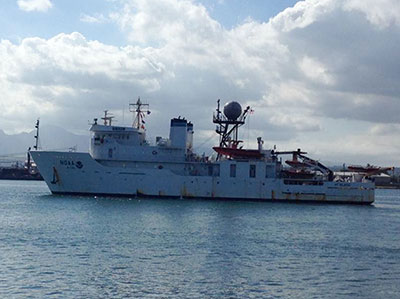Science and Research
RAMP | August 13, 2014: Safety First
Despite our brief delay due to hurricane activity in the region, we are off to a good start and actually making up a bit of time due to the calm seas. Our first stop will be French Frigate Shoals, about a three-day transit from Honolulu. Those three days transiting are not idle, however; scientists and crew are led through various safety trainings on the ship.
Exercises included small boat launching procedures, dive gear safety checks, fire drills, abandon ship drills and man overboard drills. The scientific team spent the rest of the time preparing for their field work and acclimating to ship life.
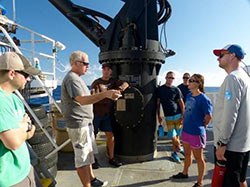
Chief Bosun Mark O’Connor briefs the scientists about safety procedures on the ship. Credit: Toni Parras/NOAA
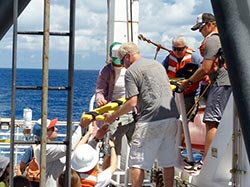
Crew and scientists practice transporting an ‘injured diver’ from the boat to the dive chamber. Credit: Toni Parras/NOAA
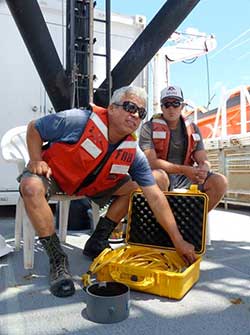
Seamen Surveyor Rich Hinostroza demonstrates the underwater diver recall system. Credit: Toni Parras/NOAA
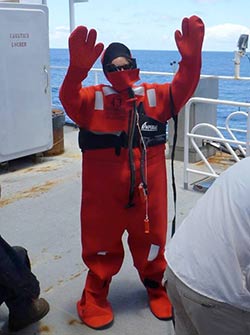
A member of the science party tries on the survival suit during an abandon ship drill. Credit: Chelsie Counsell/UH
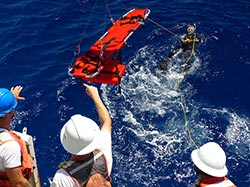
The crew practices retrieving a person from the water during a man overboard drill. Credit: Toni Parras/NOAA

Researchers enjoy their first evening at sea with a beautiful view of an almost-full moon. Credit: Toni Parras/NOAA
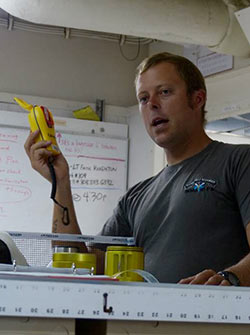
Bosun Group Leader Scotty Jones demonstrates a safety feature for the science divers – the P-PIRB (personal position-indicating radio beacon), which is a distress radio beacon that a diver can activate if he/she surfaces out of view of the surface support vessels. It communicates with a global search-and-rescue satellite system, and transmits a GPS latitude/longitude. Credit: Toni Parras/NOAA
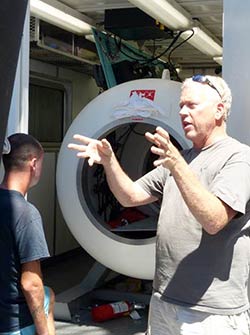
Chief Bosun Mark O’Connor briefs the scientists on the recompression chamber. Credit: Toni Parras/NOAA
Return to RAMP Expedition Log.
